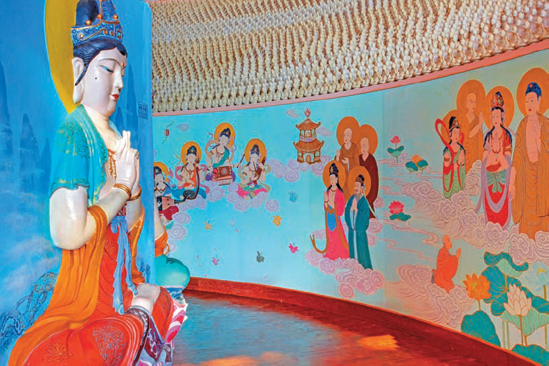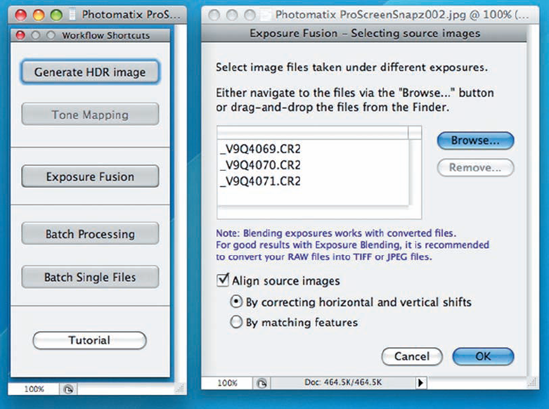Chapter V. Exposure Fusion with Photomatix

The two previous chapters described processes for creating true HDR images and pseudo HDR images using Photomatix. Here is another HDR technique to add to your choices: Exposure Fusion with Photomatix.
Exposure Fusion is a quick HDR fix. It's super fast and easy, because it's basically automatic, and there aren't any tone mapping controls to maneuver. In fact, an Exposure Fusion image can be created in about a quarter of the time it takes to create a true HDR image.
Sure, speed and ease are big advantages, but keep in mind that there is no substitute for true HDR imaging ... when a scene you're capturing has a strong contrast level.
I'll say it again: Contrast level is the key. If the contrast range is relatively low, as it was in this area of a Buddhist Temple, then Exposure Fusion can do a great job enhancing a photograph. In fact, it can do an even better job than what sometimes results from playing around with RAW files in Adobe Camera RAW. It can't, however, compete with true HDR imaging.
In this chapter we'll explore the pros and cons of Exposure Fusion.
Launching Exposure Fusion

After you open Photomatix, go to Process > Exposure Fusion. Click on the Exposure Fusion button, and you'll get the Exposure Fusion – Selecting Source Images window. ...
Get Rick Sammon's HDR Photography Secrets for digital photographers now with the O’Reilly learning platform.
O’Reilly members experience books, live events, courses curated by job role, and more from O’Reilly and nearly 200 top publishers.

